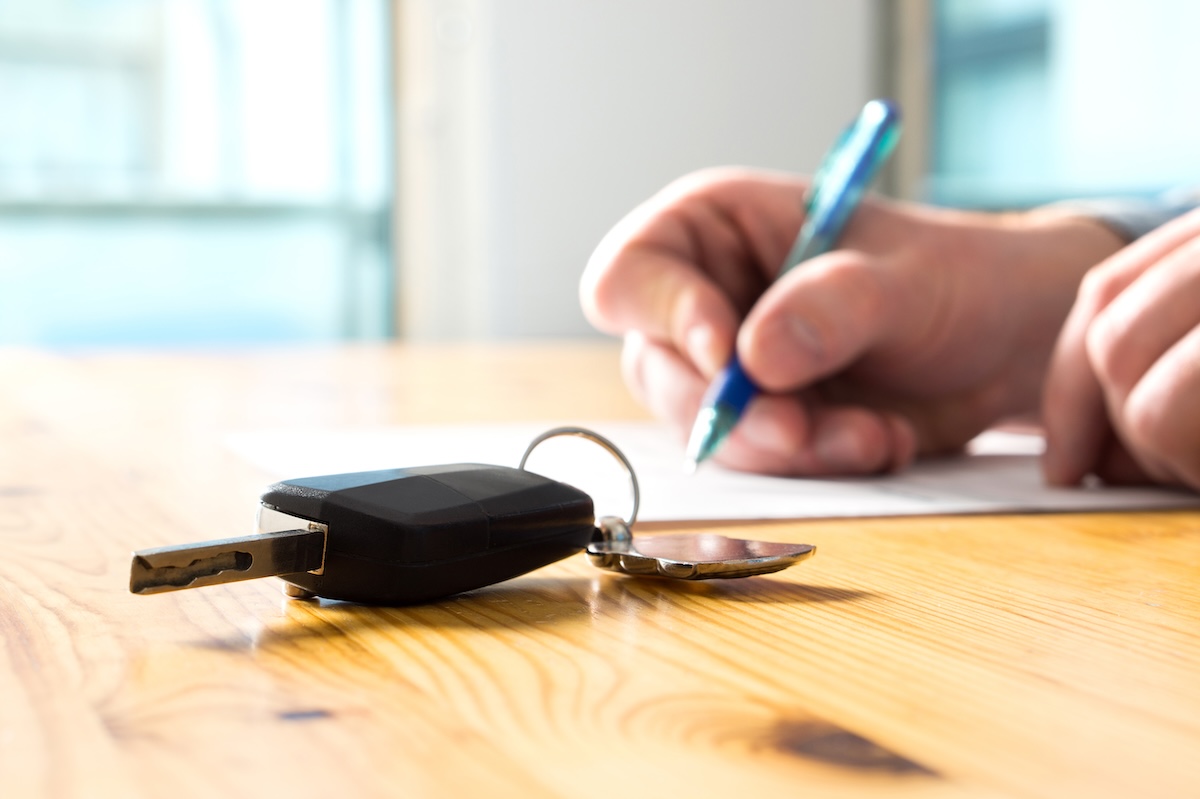There's a lot to process when a family member dies. Coping with your loss may be made harder if you have to handle the material items the decedent left behind, like a car.
This step-by-step guide can help you through the process of how to sell a deceased family member’s car and relieve some of the stress that accompanies the death of a loved one.
Fast Facts
- Being thorough and organized is key to selling a deceased family member's car.
- If there is a will, a Transfer on Death addendum on the title, or a joint title for the car, selling a loved one's car can be simple and straightforward.
- Research your state laws and make copies of all legal documents.
- If you're still in doubt about the process it's important to seek additional legal advice.
How To Sell a Deceased Family Member's Car
- Step 1: Locate the Will
- Step 2: Make Sure the Car Doesn’t Have Unpaid Loans
- Step 3: Cancel the Insurance
- Step 4: Understand Survivorship Rights
- Step 5: Go to Probate
- Step 6: Choose Your Sale Method
Step 1: Locate the Will
If the deceased person left a last will and testament, having that paperwork will make the process relatively straightforward. You may or may not be the beneficiary or the deceased’s next of kin, but if the will names you the executor of the estate, then you can legally sell the car. The probate court (the state-run agency that handles inheritance) will issue letters testamentary or letters of administration, both of which give the recipient grant of probate, which is the legal right to act on behalf of the deceased’s estate and allow them the legal authority to sell the vehicle, among other items left behind. Make copies of these letters and the death certificate for your records and to share if someone questions your authority over the vehicle. (You can also request multiple certified copies of the death certificate at the time of death.) If there is no probate, you can use an Affidavit for Transfer of Personal Property to transfer ownership.
Possession or car ownership is not enough, though, because you'll need to acquire the car title in order to sell it and transfer ownership to a new registered keeper. Your state's department of motor vehicles (DMV) website will provide details on how to acquire the vehicle title. (In some states, it may be as simple as bringing the certificate of title and the death certificate to your local title office to have a title transfer initiated). If you don't have experience selling a car yourself, CarGurus has resources that can help with things like selling your car online, making the most money you can out of the car sale, understanding your car’s value, who's responsible for sales tax and title fees, and more car-selling advice.
Step 2: Make Sure the Car Doesn’t Have Unpaid Loans
If the car has a lien, you as the new vehicle owner will need to pay off the outstanding finance before taking any of the steps listed above to sell the car. Once you pay off the car's loan, the lienholder, or lender, will provide you with a clear title. If there is no lien, you still need the title, but it doesn't need to be in your name. Instead, after you have made the sale, just sign the back of the title as if you own the vehicle and next to your name write "executor for the estate of [deceased owner's name]." The new owner of the vehicle will then take the title to their local DMV office, and the state will issue a new title in their name as part of the vehicle registration process, along with the new registration and license plates (in most states).
Step 3: Cancel the Insurance
Before selling the deceased person’s car, you’ll also need to cancel the car insurance policy, assuming it has one. The insurance company may ask for a copy of the policyholder’s death certificate and the new keeper’s letter of testamentary.
Step 4: Understand Survivorship Rights
Estate planning can make the process simpler, but even if your loved one didn't leave a will, there are some documents that can help with the legal process. If the vehicle was under joint ownership, then it may have been jointly titled to your loved one's spouse. In this case, the surviving spouse needs only a copy of the death certificate and a valid ID like a driver's license to prove ownership of the vehicle—and, thus, the right to sell it. The vehicle may have also been jointly titled with "rights of survivorship," which means when one of the co-owners dies, the other becomes the vehicle's sole surviving owner, and thus has the right to sell it with the death certificate and an ID as proof of ownership.
A joint title is often designated with the initials "JWROS" (joint with right of survivorship) appearing after the names on the title: "John Doe and Jane Doe, JWROS." For more information on your state's joint titling laws, consult your state's Department of Transportation website.
The title may include a "Transfer on Death" or "TOD" addendum naming you as the car owner upon the death of the previous owner. If this is this case—and the state decides the estate does not need to be probated—you will need a copy of the death certificate and a letter from the court stating that the deceased died "intestate" (without a will) and that there is either no estate or that the estate does not need to be probated in order for you to sell the vehicle (in most states).
As you've probably guessed by now, these laws vary by state. Research the laws in your state on the DMV and Department of Transportation websites to understand what kind of documents you will need to sell a deceased person's car. Consulting with an attorney, if possible, is a good way to make sure you are following proper procedures.
Step 5: Go to Probate
If there is no will, TOD addendum, or a JWROS designation, you will have to go through probate court to attain the authority to sell the vehicle. If there is a general consensus among the living heirs of the deceased that you should take ownership of the car, you can list it for sale immediately after acquiring the appropriate documentation for your state—most likely a death certificate and a letter from the probate judge.
An attorney acting as the executor of the estate may also want to intercede on your behalf and help you with the sale of the car in order to settle any outstanding debt. However, if the person died without a will and left a large estate—or if there are disagreements among the heirs—the probate process could take years. Unfortunately, if this is the case, selling the car will also take that long.
Step 6: Choose Your Sale Method
Chances are that if you’re not planning to keep the car yourself, you’d like to get rid of it in as hassle-free a way as possible. As a first step, head over to the CarGurus sell my car page and find out if the car in question is a good candidate to sell to a local dealership. Just plug details such as the car’s make, model, and year into the form, and we’ll show you up to five offers from local dealerships. If you want to accept, just choose the best offer and will put you in touch with the dealership to finalize the sale.
Alternatives to selling your car online include a private sale, or you could reach out to a dealer yourself (in much the same way as you’d handle a trade-in or a part exchange). See our guide to the best Ways to Sell Your Car for more information about each option.
It’s also worth understanding the car’s market value before you sell it, which will give you a good idea of what is and isn’t a fair price. Punch in the vehicle’s licence plate or VIN number and your state at CarGurus’ What's my car worth? page, and it’ll generate a car valuation from just those details. There is also a wealth of other car buying and selling tips on our research page.








